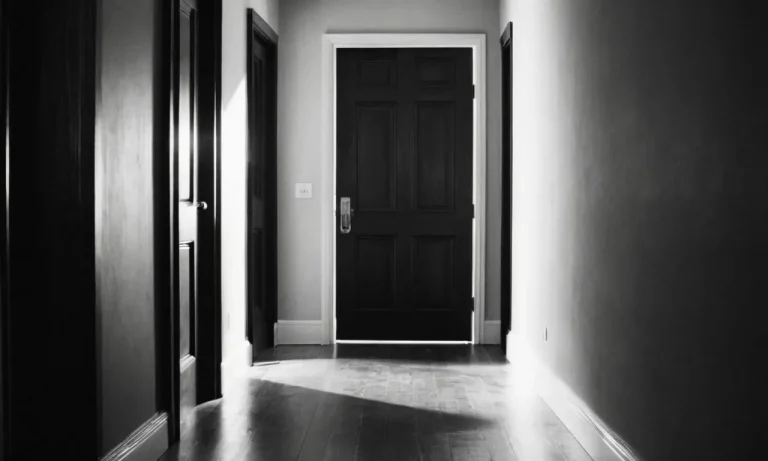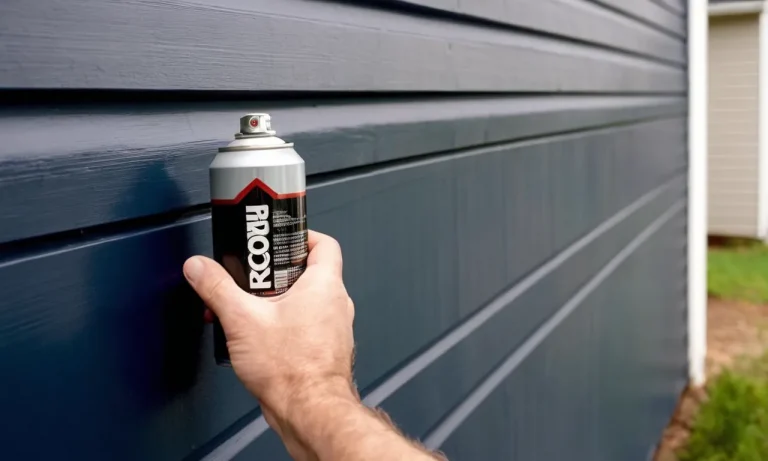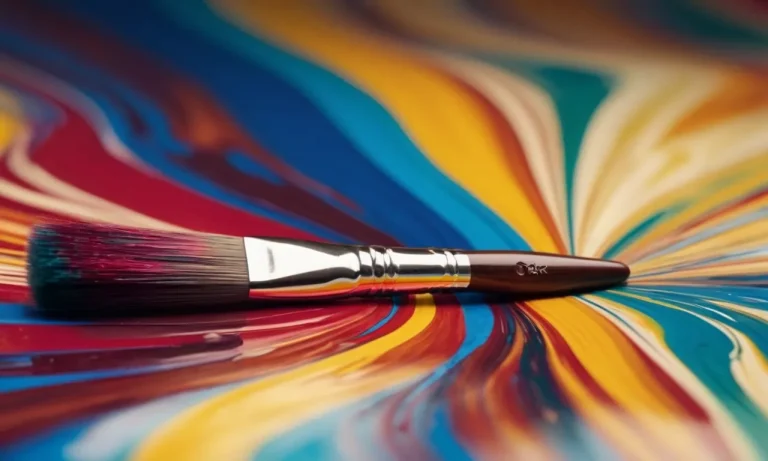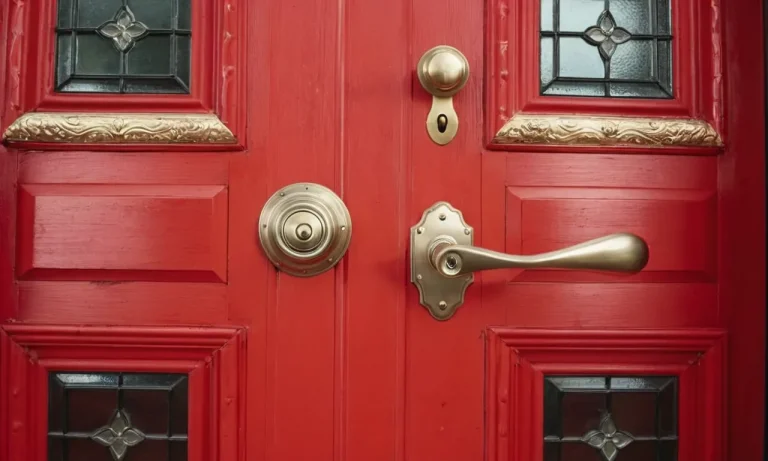Can You Paint Pvc Pipe? A Complete Guide
Painting PVC pipe is a great way to update old plumbing or give a decorative look to DIY projects. With the right paint and preparation, PVC can be painted successfully.
If you’re short on time, here’s the quick answer: Yes, you can paint PVC pipe if you use a primer and paint made specifically for plastics. Sanding the surface before painting also helps the paint adhere better.
In this comprehensive guide, we’ll cover everything you need to know about painting PVC pipe. We’ll discuss the right types of paint to use, how to prepare the surface, application tips, and potential issues to watch out for.
Choosing the Right Paint for PVC Pipe
When it comes to painting PVC pipe, it’s important to choose the right type of paint to ensure a long-lasting and professional finish. Here are some tips to help you select the perfect paint for your PVC project.
Look for paint labeled for plastic or PVC
When purchasing paint for your PVC pipe, make sure to look for products that are specifically labeled for use on plastic or PVC surfaces. These paints are specially formulated to adhere to the smooth surface of PVC and provide excellent durability and coverage.
Using a paint that is not designed for plastic may result in poor adhesion and a less satisfactory finish.
Acrylic and latex paints work best
Acrylic and latex paints are the most suitable options for painting PVC pipe. These types of paints are water-based and provide excellent adhesion to plastic surfaces. They also dry quickly, have low levels of volatile organic compounds (VOCs), and are easy to clean up with soap and water.
Acrylic and latex paints come in a wide range of colors and finishes, allowing you to achieve the desired look for your PVC project.
Avoid oil-based paints
It’s best to avoid using oil-based paints on PVC pipe. Oil-based paints are not designed for use on plastic surfaces and may not adhere properly, leading to peeling and flaking over time. Additionally, oil-based paints have a strong odor, take longer to dry, and require the use of harsh solvents for cleanup.
Stick with acrylic and latex paints to ensure a successful painting experience.
Remember, proper surface preparation is crucial when painting PVC pipe. Make sure to clean the surface thoroughly and remove any dirt, dust, or grease before applying the paint. Use a primer specifically formulated for plastic surfaces, if necessary, to enhance adhesion and ensure a smooth and even finish.
For more information on painting PVC pipe, you can visit www.diynetwork.com or consult with a professional at your local home improvement store.
Surface Preparation Tips for PVC Pipe
Sand the surface with fine grit sandpaper
Before painting PVC pipe, it is important to prepare the surface properly to ensure good adhesion and a long-lasting finish. One of the first steps in surface preparation is to sand the PVC pipe with fine grit sandpaper.
This helps to roughen up the surface and create a better bond between the paint and the pipe. Sanding also helps to remove any dirt, grease, or grime that may be present on the surface.
Wipe away debris and clean with solvent
After sanding, it is crucial to wipe away any debris or dust particles that may have been generated. This can be done using a clean, dry cloth or a tack cloth. Once the surface is free from loose particles, it is recommended to clean the PVC pipe with a solvent such as isopropyl alcohol or acetone.
This will help to remove any remaining dirt or oils and ensure a clean surface for painting.
Apply primer before painting
Priming the PVC pipe before painting is an essential step that should not be skipped. A high-quality primer specifically designed for use on PVC surfaces should be applied evenly to the entire surface.
The primer helps to create a smooth and uniform base for the paint, improves adhesion, and enhances the durability of the finish. It is important to follow the manufacturer’s instructions regarding drying times and application techniques for the primer.
Pro Tip: When choosing a primer and paint for PVC pipe, it is advisable to select products that are specifically formulated for use on plastics. These products are designed to adhere to the surface of PVC pipe and provide long-lasting protection against the elements.
For more detailed information on painting PVC pipe and other DIY projects, you can visit diynetwork.com.
How to Apply Paint to PVC Pipe
Use short, light coats
When painting PVC pipe, it is important to use short and light coats of paint. Applying a thick coat of paint can result in drips, uneven coverage, and a less professional-looking finish. Start by holding the spray can or paintbrush about 6-8 inches away from the pipe and apply the paint in quick, sweeping motions.
This will help to achieve an even and smooth coat of paint.
Allow proper drying time between coats
After each coat of paint, it is crucial to allow proper drying time before applying the next coat. This will ensure that the paint adheres properly and prevents any smudging or peeling. The drying time can vary depending on the type of paint used, so be sure to check the instructions on the paint can.
In general, it is recommended to wait at least 24 hours between coats to ensure the best results.
Paint in a well-ventilated area
When painting PVC pipe, it is essential to do so in a well-ventilated area. The fumes from the paint can be harmful if inhaled in large quantities, so it is important to have proper ventilation. Open windows or doors, or use fans to circulate the air.
If possible, consider painting outside or in a garage with the doors open to ensure a safe and comfortable painting environment.
For more detailed information on painting PVC pipe, you can visit www.diynetwork.com. They provide step-by-step guides and tips on how to achieve the best results when painting PVC pipe.
Curing and Drying Process
When painting PVC pipe, it is important to follow a proper curing and drying process to ensure the best results. Here are some key points to keep in mind:
Allow paint to cure 24-48 hours before use
After applying the paint to the PVC pipe, it is crucial to allow enough time for it to cure before using or handling it. Typically, it is recommended to let the paint cure for at least 24-48 hours. This will give the paint enough time to dry completely and adhere to the surface of the pipe.
During the curing process, it is important to keep the painted PVC pipe in a well-ventilated area. This will help the paint dry evenly and prevent any potential issues with odor or fumes. It is also advisable to avoid touching or moving the pipe during this time to avoid smudging or damaging the paint.
High humidity can affect drying time
It is worth noting that high humidity levels can affect the drying time of the paint on PVC pipe. In areas with high humidity, the paint may take longer to dry and cure properly. To mitigate this, it is recommended to paint PVC pipes on days with lower humidity levels or use fans or dehumidifiers to improve air circulation and speed up the drying process.
If you are unsure about the humidity levels in your area, you can check the local weather forecast or use a hygrometer to measure the humidity indoors. This will help you plan your painting project accordingly and ensure optimal drying conditions for the paint on the PVC pipe.
Applying in direct sunlight can cause issues
While it may be tempting to paint PVC pipes outdoors in direct sunlight for convenience, it can cause issues with the drying process. Direct sunlight can accelerate the drying time of the paint, which may lead to uneven drying and potential issues with the final finish.
To avoid these problems, it is recommended to paint PVC pipes in a shaded or indoor area. This will provide a more controlled environment for the paint to dry evenly and ensure a smooth and professional-looking finish.
Remember to always follow the manufacturer’s instructions on the paint can for specific curing and drying times. Each type of paint may have different requirements, so it is important to read and follow the guidelines provided.
For more information on painting PVC pipes and other DIY projects, you can visit websites like DIY Network or Family Handyman. These websites offer a wealth of resources and tips for all your home improvement needs.
Tips for Achieving a Smooth Finish
Gently sand between coats
When painting PVC pipe, it’s important to achieve a smooth finish. One effective tip is to gently sand between coats. This helps to remove any imperfections or rough areas that may have appeared during the painting process.
By sanding lightly with fine-grit sandpaper, you can create a more even surface for the next coat of paint to adhere to. Take care not to sand too aggressively, as this can damage the PVC surface.
Use high quality brushes or rollers
The quality of your brushes or rollers can greatly impact the final result of your painted PVC pipe. Using high-quality tools will ensure a smoother application and a more professional finish. Look for brushes or rollers specifically designed for use with latex or acrylic paints, as these are the most commonly used for painting PVC.
Investing in good quality tools may cost a bit more, but it will be worth it for the end result.
Avoid overbrushing
Overbrushing is a common mistake made when painting PVC pipe. This occurs when too much pressure is applied during the painting process, causing streaks or brush marks to appear. To avoid this, use light, even strokes when applying the paint.
Start at one end of the pipe and work your way to the other end in a smooth, controlled manner. By avoiding overbrushing, you can achieve a more seamless and professional-looking finish.
Remember, it’s always a good idea to follow the manufacturer’s instructions when painting PVC pipe. Different types of paint may have specific recommendations for application and drying times. By following these tips and taking your time, you can successfully paint PVC pipe and achieve a smooth finish that will enhance the appearance of your project.
Conclusion
With the right materials and technique, you can successfully paint PVC pipes and accessories for an updated look. Just be sure to use plastic-specific paint, properly prepare the surface, and allow ample drying time between coats.
Painting PVC does require some patience, but the end results are worth it. You’ll be able to revamp plumbing fixtures or add color to DIY projects with a durable, quality paint job on PVC pipe.







